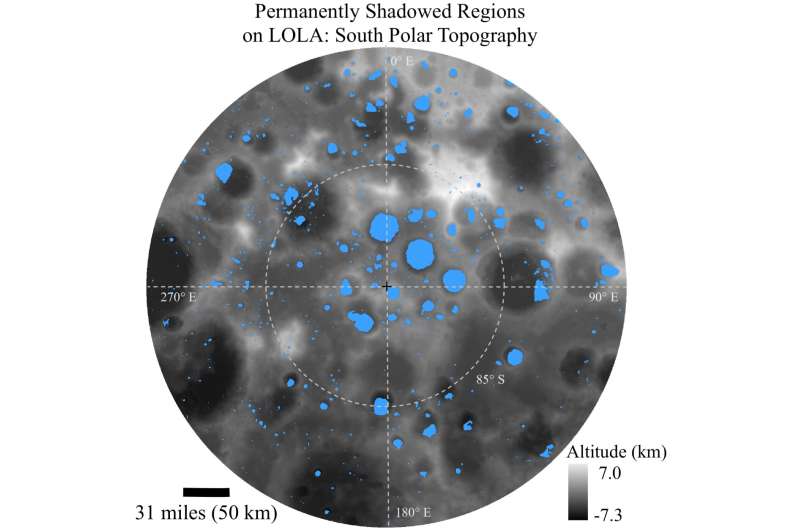Researchers have discovered widespread evidence of water ice deposits on the lunar surface, according to a new analysis of data from NASA’s Lunar Reconnaissance Orbiter mission. This finding could have significant implications for future lunar exploration, as ice could be used as a valuable resource for propellant, life support, and other essential needs. Lunar Reconnaissance Orbiter and Water on the Moon.

Widespread Ice Deposits
A new report in The Planetary Science Journal shows that ices embedded inside the regolith of lunar dust and rock are widely distributed beyond cold traps, far from the polar caps where they were previously believed to be located. According to the authors of a newly published paper, ice appears to be spread across lunar PSRs widely, reaching almost up to 77 degrees south latitude.
Ice distribution tends to favor the coldest locations in the PSRs (below 75 Kelvin or -198°C or -325°F) and nearly their poleward-facing slopes, with peak abundances at <70K (-203°C, -333°F). The volume of ice deposits is not precisely known, but for every square meter of these sites, there should be at least 5 liters of ice per topmost meter of regolith.
How Ice Forms
The research helps to explain how the frozen lunar ice deposits could have been formed and where they came from. Comets and meteoroids may supply the lunar regolith with ice, as well as by vapor release from the rock interior of low-albedo areas responsible for a large fraction of the hydrogen detected on the moon’s surface, which then also forms ice.[3] Proton irradiation leaves refractory lone hydrogen atoms in the regolith,[4] that can react with oxygen to form hydroxyl or water.
Because the PSRs live in a state of eternal night, with no hint of sunlight to help warm them up, they maintain ice-trapping conditions that last for eons. These cold surfaces of the PSRs can maintain surface ice over billions of years, allowing stores to develop. Ice sublimates at a much higher rate from surfaces under direct sunlight, hence any ice present cannot accumulate.
Future lunar exploration applications
Lunar Water Deposits -Image Credit: NASA The presence of significant caches of ice at the lunar poles is a key driver for permanent occupation. Water ice could be an important resource for future moon missions, as water can be used to protect against the absorption of radiation and produce shielding for human habitats, life support operations, rocket fuel, energy, and air.
It also represents crucial insight for lunar planners to identify high-priority, scientifically interesting regions that have volatile ice deposits. This information will help focus future explorations and determine where lunar settlements could be constructed or lunar resources could be extracted. The successful harvesting of these ice deposits could potentially be an important piece of the puzzle in establishing a permanent foothold for humanity on the Moon as we continue to explore its surface.
